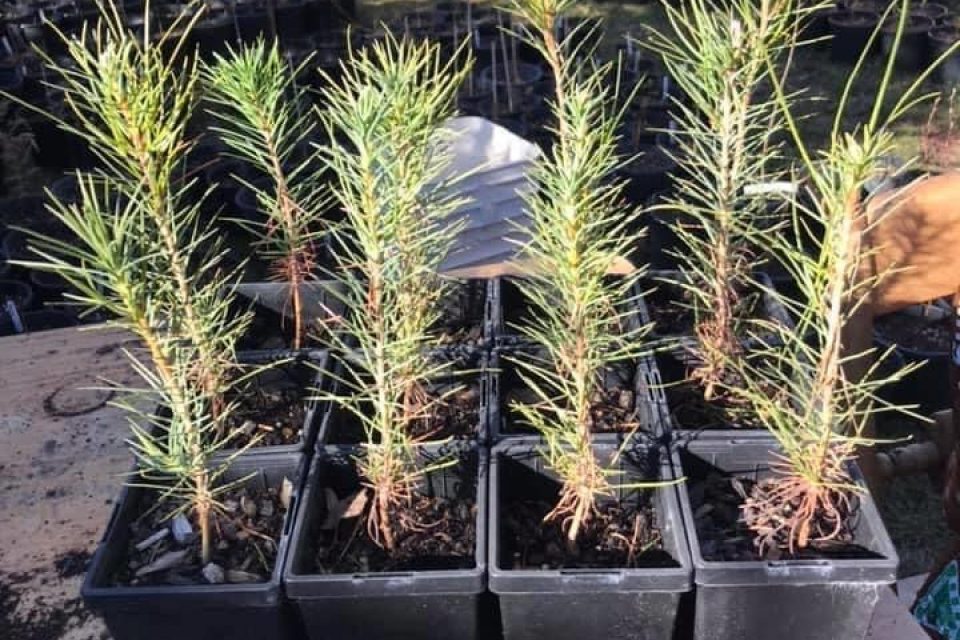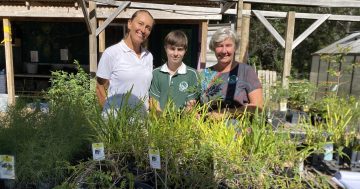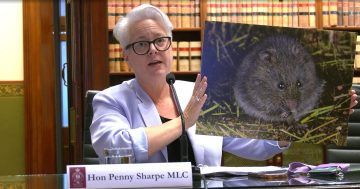
Ranger Ben O’Brien says the old English oaks planted around Crookwell sparked his passion for trees. Photo: Supplied.
For many, trees are simply a part of nature. But for ACT Parks and Conservation Service ranger Ben O’Brien, the wonder of the tallest freestanding organisms on the planet goes far beyond that.
Ben is a contributor to the Crookwell District Plants and Gardens Facebook group and his posts beautifully capture the intricacy of nature. His selections are of unique species of trees – a passion played out in a project which sees him challenging himself to find, propagate and nurture the rarest and most exotic species of all.
Ben has been managing parks in the ACT for more than 10 years and has a side project, Kilchurn Nursery. He has worked for the ACT Government’s Yarralumla Nursery, growing the critically endangered Torrey Pines – one of the rarest trees in the world – to replace senescing trees in Weston Park.
In 2020, he raised seedlings to replace the heritage trees along the avenue that were planted in 1914-15.
“It is quite difficult to attain viable seed from this species as cones are sparse and are usually destroyed by cockatoos well before they mature,” he says.
“In quite a serendipitous moment, while visiting some Torrey Pines, a cockatoo dropped a mature cone with viable seeds almost at my feet. I was able to raise 30 seedlings from that cone, most of which were sold to replace the trees in Weston Park, so future generations can appreciate the tree.”
Ben knows trees; he knows about hybridisation, germination, and propagation. He has a collection of about 200 rare and hard-to-find trees that he has grown at his home in Crookwell, and on the outskirts of the town.
Crookwell, where Ben spent his childhood, is an area that lends itself to gardens, and he recalls the magnificent English oaks.
“My passion is oaks and I think it harkens back to the oak trees at the Crookwell Public School,” he says. “Still to this day when I stand under them waiting to pick up my daughter, I can’t help but marvel and be in awe.”
His hobby of collecting and propagating trees started with oaks, and he challenged himself with rare tree varieties.
Ben has spent years tending and nurturing a collection that contains the Saharan Cypress, a critically endangered conifer native to Algeria where fewer than 240 living specimens remain, and the Clan William Cedar, a critically endangered conifer native to South Africa.
He has trees that are extinct in the wild – the Franklin Tree which was last seen in the wild in 1803, and the Toromiro which was native to Easter Island and became extinct in the wild in the 1960s. He has rare hybrids – Ganders Oak and the Coastal Live Oak, a hybrid between an evergreen species and a deciduous species, that is likely the only example of this tree in Australia.






“I have a Chitalpathat, a rare unlikely intergenetic hybrid between the Desert Willow and the Southern Catalpa, both from the United States, that are poles apart. But in 1964, the then Soviet scientists from the Uzbek Academy of Science crossbred this remarkable and quite stunning tree, it’s almost a tale fit for a cold war dystopian novel.”
Ben’s quest to track down rare trees has taken him all over the countryside.
“Most of our holidays now are based around seed collecting,” he says. “I’m sure it drives my family crazy.”
Ben began when he was working as a ranger and living in a remote part of the Namadgi National Park. He was propagating fruit trees found at the European heritage sites in 2013, mainly by grafting onto rootstock to preserve the heritage trees.
His other focus is the Kilchurn Tree Nursery, where he sells to a small number of other rare tree collectors and bonsai growers.
“My nursery creates an amazing microcosm that attracts everything from the introduced blackbird that cheekily pulls my seedlings out to the native frogs that love the shelter and moisture of the nursery,” he says.
“I generally only grow 50 different species each year, and usually it’s different species each year. It’s a little bespoke.”










